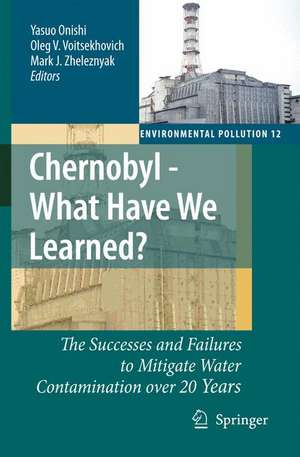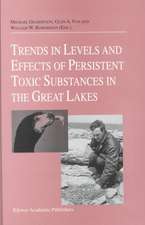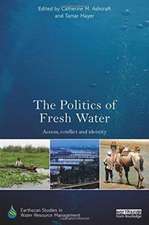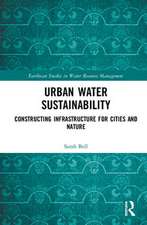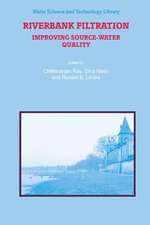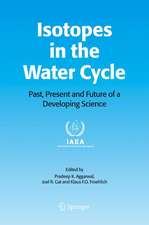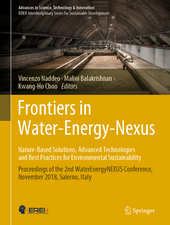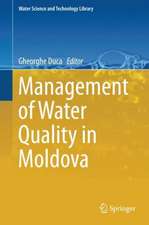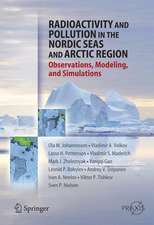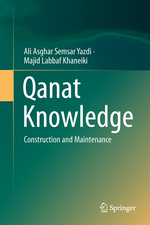Chernobyl - What Have We Learned?: The Successes and Failures to Mitigate Water Contamination Over 20 Years: Environmental Pollution, cartea 12
Editat de Yasuo Onishi, Oleg V. Voitsekhovich, Mark J. Zheleznyaken Limba Engleză Hardback – 2 oct 2006
| Toate formatele și edițiile | Preț | Express |
|---|---|---|
| Paperback (1) | 944.82 lei 6-8 săpt. | |
| SPRINGER NETHERLANDS – 26 noi 2014 | 944.82 lei 6-8 săpt. | |
| Hardback (1) | 952.26 lei 6-8 săpt. | |
| SPRINGER NETHERLANDS – 2 oct 2006 | 952.26 lei 6-8 săpt. |
Din seria Environmental Pollution
- 15%
 Preț: 640.06 lei
Preț: 640.06 lei - 18%
 Preț: 960.13 lei
Preț: 960.13 lei - 24%
 Preț: 1066.78 lei
Preț: 1066.78 lei - 18%
 Preț: 953.35 lei
Preț: 953.35 lei - 18%
 Preț: 944.82 lei
Preț: 944.82 lei - 18%
 Preț: 965.34 lei
Preț: 965.34 lei - 18%
 Preț: 1240.16 lei
Preț: 1240.16 lei - 18%
 Preț: 1225.79 lei
Preț: 1225.79 lei - 18%
 Preț: 1826.54 lei
Preț: 1826.54 lei - 18%
 Preț: 945.79 lei
Preț: 945.79 lei - 18%
 Preț: 1218.83 lei
Preț: 1218.83 lei - 18%
 Preț: 948.29 lei
Preț: 948.29 lei - 18%
 Preț: 956.50 lei
Preț: 956.50 lei - 18%
 Preț: 955.88 lei
Preț: 955.88 lei - 18%
 Preț: 947.50 lei
Preț: 947.50 lei - 18%
 Preț: 2103.87 lei
Preț: 2103.87 lei - 18%
 Preț: 963.91 lei
Preț: 963.91 lei - 18%
 Preț: 969.61 lei
Preț: 969.61 lei - 15%
 Preț: 642.51 lei
Preț: 642.51 lei - 5%
 Preț: 1301.44 lei
Preț: 1301.44 lei - 18%
 Preț: 939.00 lei
Preț: 939.00 lei - 15%
 Preț: 644.95 lei
Preț: 644.95 lei - 18%
 Preț: 1121.43 lei
Preț: 1121.43 lei - 18%
 Preț: 955.08 lei
Preț: 955.08 lei - 18%
 Preț: 1333.42 lei
Preț: 1333.42 lei - 5%
 Preț: 1098.24 lei
Preț: 1098.24 lei
Preț: 952.26 lei
Preț vechi: 1161.29 lei
-18% Nou
Puncte Express: 1428
Preț estimativ în valută:
182.21€ • 198.55$ • 153.54£
182.21€ • 198.55$ • 153.54£
Carte tipărită la comandă
Livrare economică 23 aprilie-07 mai
Preluare comenzi: 021 569.72.76
Specificații
ISBN-13: 9781402053481
ISBN-10: 1402053487
Pagini: 291
Ilustrații: X, 291 p.
Dimensiuni: 155 x 235 x 23 mm
Greutate: 0.64 kg
Ediția:2007
Editura: SPRINGER NETHERLANDS
Colecția Springer
Seria Environmental Pollution
Locul publicării:Dordrecht, Netherlands
ISBN-10: 1402053487
Pagini: 291
Ilustrații: X, 291 p.
Dimensiuni: 155 x 235 x 23 mm
Greutate: 0.64 kg
Ediția:2007
Editura: SPRINGER NETHERLANDS
Colecția Springer
Seria Environmental Pollution
Locul publicării:Dordrecht, Netherlands
Public țintă
ResearchCuprins
Soviet-Built Nuclear Plants and Their Safety.- The Chernobyl Accident and Its Aquatic Impacts on the Surrounding Area.- Radioecological Aspects of Water Use.- Population Dose Estimate Due to Aquatic Pathways.- Radiation Risk Assessment and Countermeasure Justification.- Management of the Fresh Water Environment in the Chernobyl Affected Area.- Water Protection Measures for Radioactive Groundwater Contamination in the CEZ.- Where Do We Go from Here? Construction of the New Safe Confinement.- Summary and Conclusions.
Textul de pe ultima copertă
Twenty million people have been exposed to Chernobyl radionuclides through the Dnieper River aquatic pathways. This book presents a 20-year historical overview and comprehensive study results of the aquatic environment affected by the 1986 Chernobyl nuclear accident. During this time, many water quality management practices and countermeasures were enacted. The book presents in-depth analyses of these water remediation actions, using current science and mathematical modeling, and discusses why some were successful, but many others failed. The chapter entitled Where Do We Go From Here? incorporates a comprehensive discussion of the planned New Safe Confinement (NSC) structure to cover the Chernobyl plant. The book closes with a summary and conclusions drawn from these analyses, making it a valuable reference tool for the future.
This book will be of interest to engineers, scientists, decision-makers, and those involved in radiation protection and radioecology, environmental protection and risk assessment, water remediation and mitigation measures, and radioactive waste disposal.
In addition, the detailed, almost day-to-day, emergency responses to the Chernobyl accident described in this book will also be useful to people developing emergency and long-term responses to accidental or intentional (by terrorists) releases of radionuclides, toxic chemicals and biological agents.
This book will be of interest to engineers, scientists, decision-makers, and those involved in radiation protection and radioecology, environmental protection and risk assessment, water remediation and mitigation measures, and radioactive waste disposal.
In addition, the detailed, almost day-to-day, emergency responses to the Chernobyl accident described in this book will also be useful to people developing emergency and long-term responses to accidental or intentional (by terrorists) releases of radionuclides, toxic chemicals and biological agents.
Caracteristici
Of timely importance in today's world Useful not only to researchers but to emergency planners faced with possible terrorist actions A comprehensive 20-year study Will appeal to an international audience
